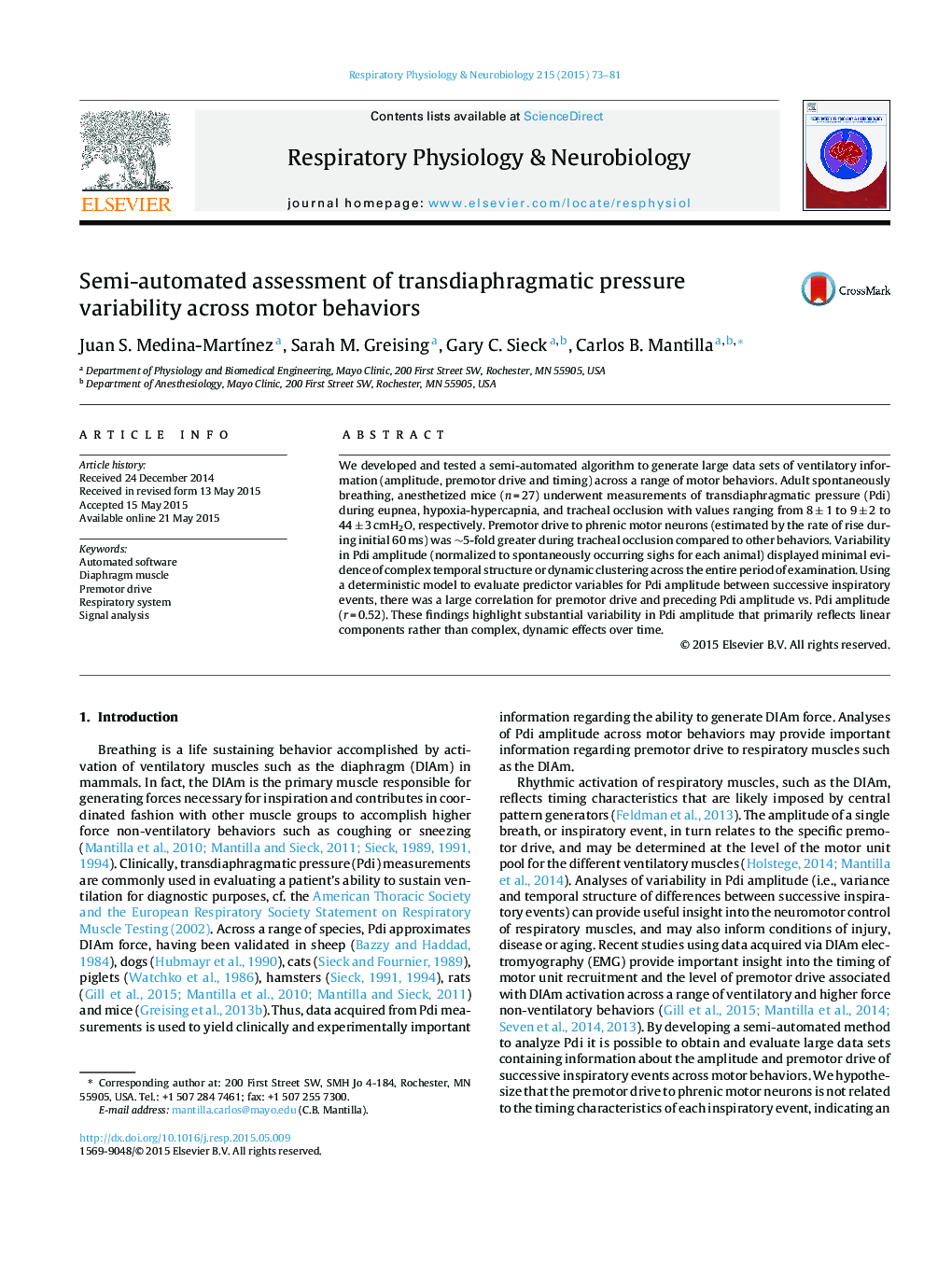| Article ID | Journal | Published Year | Pages | File Type |
|---|---|---|---|---|
| 2846860 | Respiratory Physiology & Neurobiology | 2015 | 9 Pages |
Abstract
We developed and tested a semi-automated algorithm to generate large data sets of ventilatory information (amplitude, premotor drive and timing) across a range of motor behaviors. Adult spontaneously breathing, anesthetized mice (n = 27) underwent measurements of transdiaphragmatic pressure (Pdi) during eupnea, hypoxia-hypercapnia, and tracheal occlusion with values ranging from 8 ± 1 to 9 ± 2 to 44 ± 3 cmH2O, respectively. Premotor drive to phrenic motor neurons (estimated by the rate of rise during initial 60 ms) was â¼5-fold greater during tracheal occlusion compared to other behaviors. Variability in Pdi amplitude (normalized to spontaneously occurring sighs for each animal) displayed minimal evidence of complex temporal structure or dynamic clustering across the entire period of examination. Using a deterministic model to evaluate predictor variables for Pdi amplitude between successive inspiratory events, there was a large correlation for premotor drive and preceding Pdi amplitude vs. Pdi amplitude (r = 0.52). These findings highlight substantial variability in Pdi amplitude that primarily reflects linear components rather than complex, dynamic effects over time.
Related Topics
Life Sciences
Biochemistry, Genetics and Molecular Biology
Physiology
Authors
Juan S. Medina-MartÃnez, Sarah M. Greising, Gary C. Sieck, Carlos B. Mantilla,
